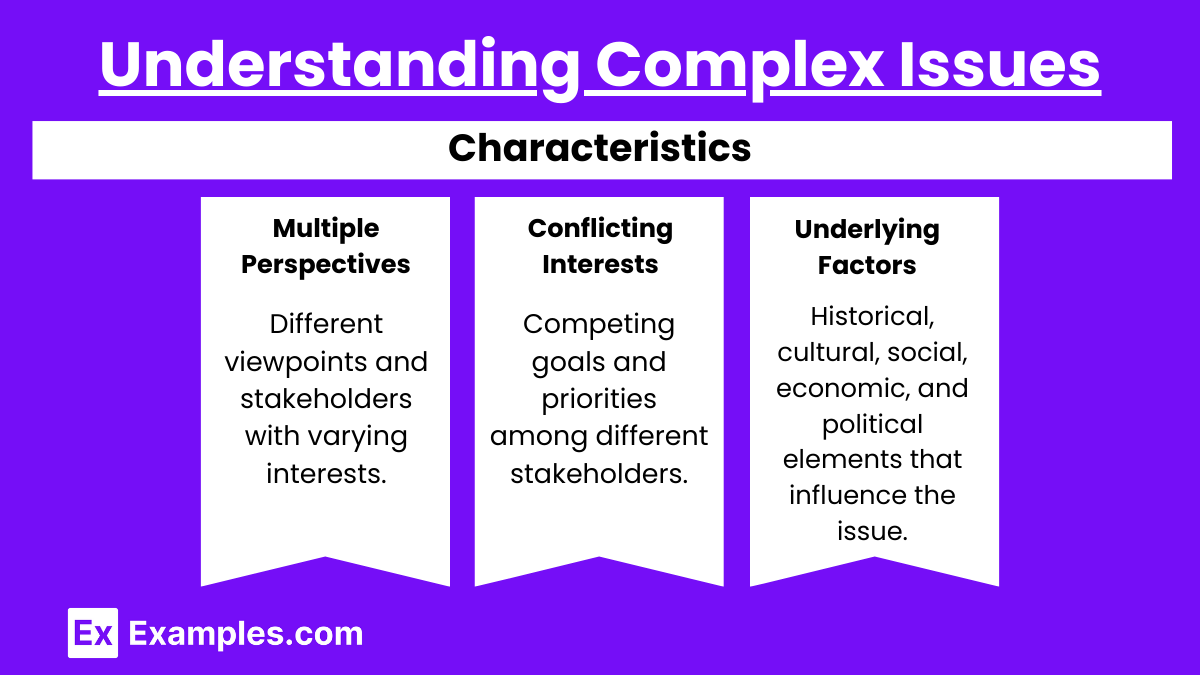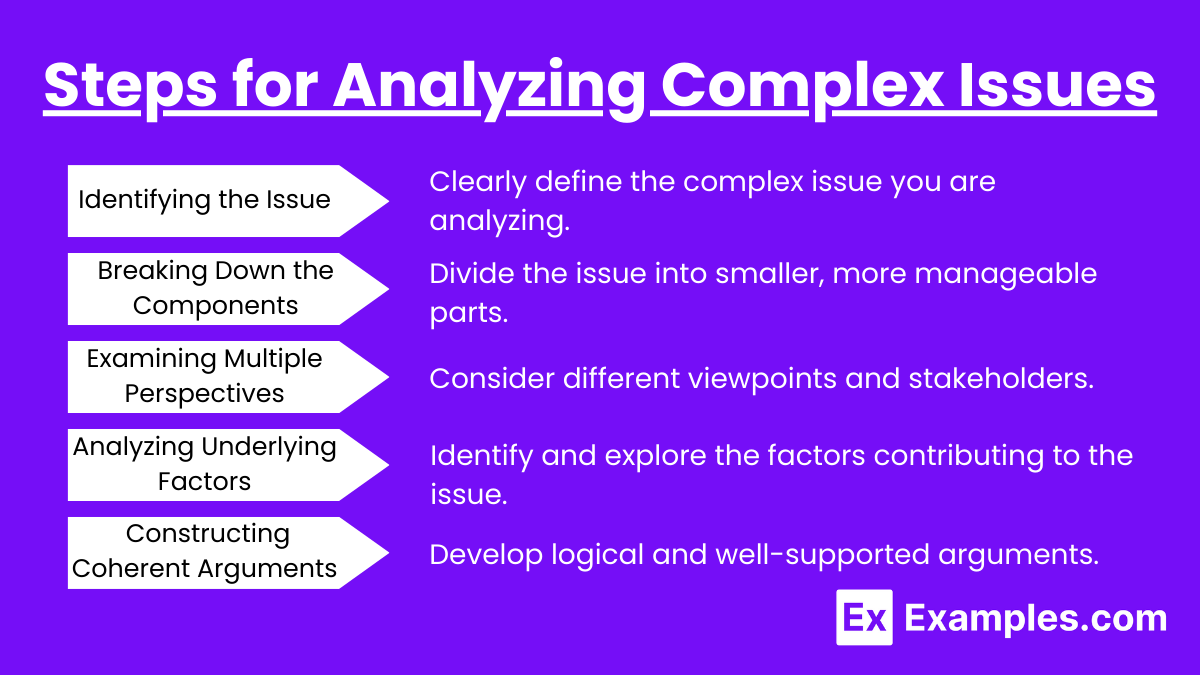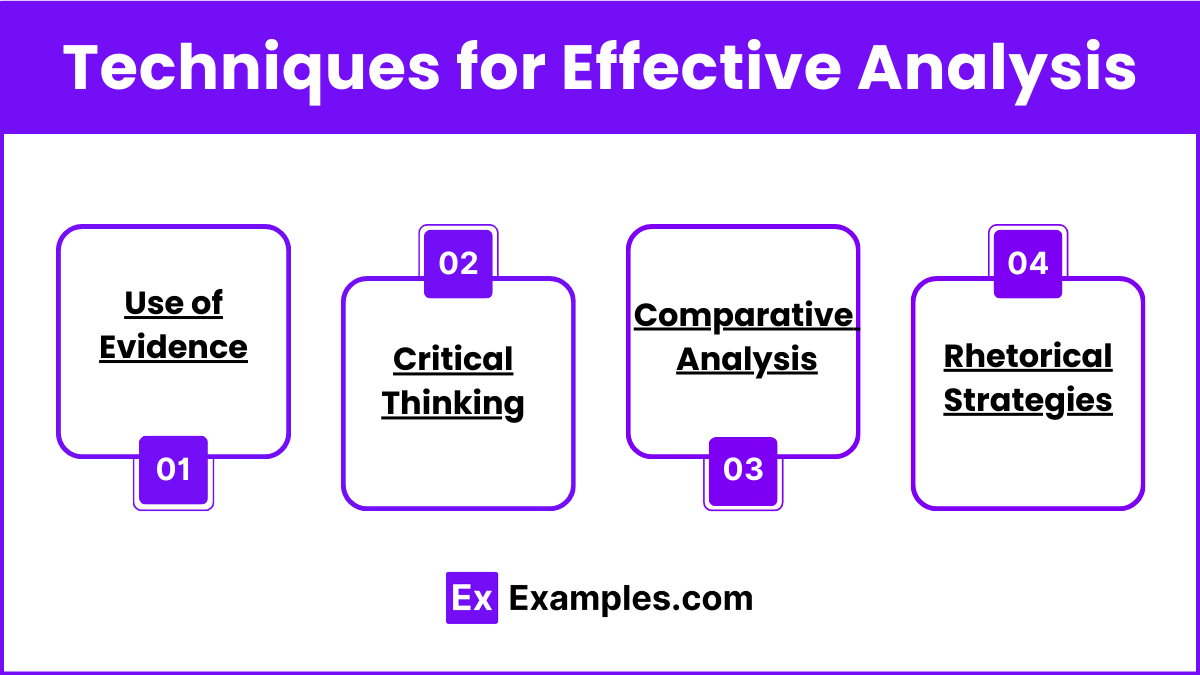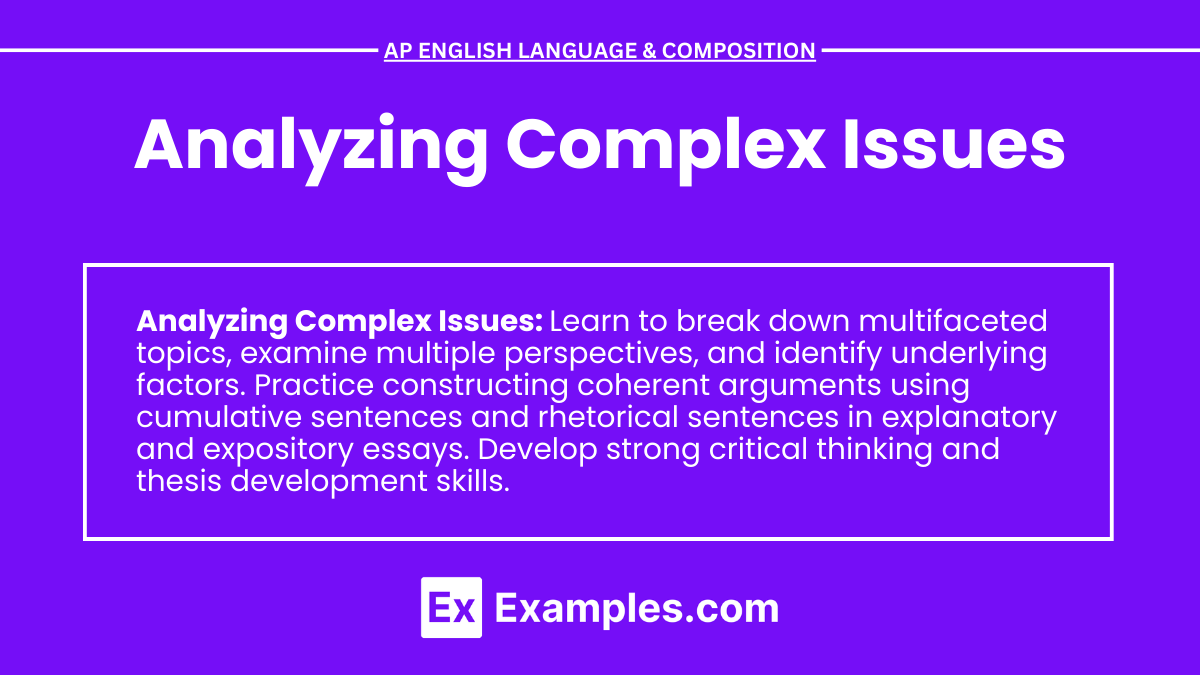In the AP English Language and Composition exam, analyzing complex issues is crucial for developing insightful and persuasive essays. This process involves breaking down multifaceted topics into their component parts, examining various perspectives, and constructing coherent arguments. Whether engaging in argumentative writing or delivering an argumentative speech, mastering this skill enables you to create well-rounded arguments supported by rhetorical sentences and cumulative sentences. By thoroughly analyzing complex issues, you enhance the depth and credibility of your writing, making your arguments more compelling and effective.
Learning Objectives
By studying the topic of analyzing complex issues, students will achieve several key learning objectives. They will enhance their critical thinking skills by breaking down multifaceted topics and examining various perspectives. Students will learn to use cumulative sentences and rhetorical sentences to construct well-rounded arguments in explanatory essays and expository essays. They will develop the ability to craft a strong final thesis statement that reflects a comprehensive understanding of the issue. Mastery of these techniques will enable students to produce insightful, persuasive, and nuanced essays.
Understanding Complex Issues
Definition
Complex issues are multifaceted topics that cannot be easily resolved or understood. They often involve multiple perspectives, conflicting interests, and various underlying factors.
Characteristics

- Multiple Perspectives: Different viewpoints and stakeholders with varying interests.
- Conflicting Interests: Competing goals and priorities.
- Underlying Factors: Historical, cultural, social, economic, and political elements that influence the issue.
Steps for Analyzing Complex Issues

1. Identifying the Issue
- Definition: Clearly define the complex issue you are analyzing.
- Example: “The impact of social media on mental health.”
2. Breaking Down the Components
- Definition: Divide the issue into smaller, more manageable parts.
- Example: “Social media’s influence on self-esteem, anxiety, and social comparison.”
3. Examining Multiple Perspectives
- Definition: Consider different viewpoints and stakeholders.
- Example: “Teens, parents, mental health professionals, social media companies.”
4. Analyzing Underlying Factors
- Definition: Identify and explore the factors contributing to the issue.
- Example: “Cultural norms, technological advancements, economic incentives, psychological theories.”
5. Constructing Coherent Arguments
- Definition: Develop logical and well-supported arguments.
- Example: “Social media can negatively impact mental health by increasing anxiety and fostering unhealthy comparisons.”
Techniques for Effective Analysis

Use of Evidence
- Definition: Incorporate data, studies, quotes, and examples to support your analysis.
- Example: “According to a study by the American Psychological Association, excessive social media use is linked to higher levels of anxiety.”
Critical Thinking
- Definition: Evaluate and interpret the evidence, considering its implications and limitations.
- Example: “While social media can be harmful, it also offers platforms for support and community building.”
Comparative Analysis
- Definition: Compare and contrast different aspects of the issue to highlight complexities.
- Example: “Comparing the effects of social media on different age groups reveals varying levels of vulnerability.”
Rhetorical Strategies
- Definition: Use rhetorical devices to enhance your analysis and persuade your audience.
- Example: “By appealing to ethos, pathos, and logos, you can strengthen your argument and make it more compelling.”
Examples
Example 1: Argumentative Essay on Climate Change
Thesis Statement: “Addressing climate change requires a multifaceted approach that includes policy changes, technological innovation, and individual responsibility.” Components:
- Policy Changes: Government regulations, international agreements.
- Technological Innovation: Renewable energy, carbon capture.
- Individual Responsibility: Lifestyle changes, consumer choices. Multiple Perspectives:
- Governments: Enacting policies, funding research.
- Scientists: Conducting research, developing technologies.
- Public: Adopting sustainable practices, advocating for change. Underlying Factors:
- Economic: Costs and benefits of action versus inaction.
- Social: Public awareness, cultural attitudes.
- Political: Partisanship, lobbying by interest groups.
Example 2: Expository Essay on Education Reform
Thesis Statement: “Improving education requires addressing systemic inequalities, integrating technology, and fostering critical thinking skills.” Components:
- Systemic Inequalities: Funding disparities, access to resources.
- Integrating Technology: Digital tools, online learning platforms.
- Fostering Critical Thinking: Curriculum design, teaching methods. Multiple Perspectives:
- Students: Access to quality education, learning experiences.
- Teachers: Professional development, classroom resources.
- Policy Makers: Education policies, funding decisions. Underlying Factors:
- Economic: School funding, socioeconomic status.
- Cultural: Attitudes toward education, parental involvement.
- Technological: Availability and integration of digital tools.


